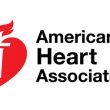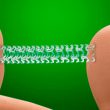The aim of this study was to find the optimal angiographic endpoint for infrapopliteal interventions to be able to predict wound healing. Evidence shows acceptable patency and successful limb salvage in patients with critical limb ischemia after infrapopliteal intervention. However, the optimal angiographic endpoint remains unclear. Is it enough to restore flow in one...
The ReACT Study: Is Angiographic Follow-Up Necessary?
The purpose of this study was to assess the long-term clinical impact of routine angiographic follow-up after coronary angioplasty. Routine angiographic follow-up has been criticized by both clinical and interventional cardiologists for increasing the rate of coronary revascularization due to the “oculostenotic reflex.” This caused a shift in the paradigm for clinical studies, and...
Carotid Revascularization After Stroke: When Should It Be Performed?
In 2006, the American Heart Association guidelines recommended that carotid revascularization be performed within 2 weeks of stroke based on data from 2 randomized trials on carotid endarterectomy. This study aimed to determine whether the time between the event and revascularization has decreased after these guidelines were issued, and the proportion of patients receiving some sort of revascularization (endarterectomy...
FUTURE: Mortality Increase in the FFR Arm, Real or Casual?
The FUTURE study, testing the utility of functional revascularization by measuring the fractional flow reserve (FFR), was halted early by its safety committee due to an increased mortality rate at 1 year among patients guided by FFR. In this unexpected unprecedented outcome, 17 patients in the FFR-guided group died at a year of follow-up, compared with 7 patients...
Paclitaxel Drug Coated Balloon in Femoral: Effective at Long Term?
In patients with symptomatic peripheral vascular disease, the paclitaxel coated balloon showed superior efficacy at 3 years compared to the conventional balloon, in addition to very good results at one year when tested in the real world outside strict trial inclusion/exclusion criteria. Both the IN.PACT SFA trial and the IN.PACT SFA global registry showed...
SOLACI SOLidario: The Program Helping Those Who Need It the Most
In Latin America and the Caribbean, thousands of people lack medical insurance and economic resources to obtain access to a diagnostic cardiovascular procedure and/or percutaneous therapy should they need it. The primary purpose of SOLACI’s SOLidario (which means solidary in Spanish) program is to grant these patients access to these procedures in renowned medical...
Deferring Lesions by FFR in ACS: Yes or No?
Deferring treatment through angioplasty in non-ischemic lesions by fractional flow reserve (FFR) is associated with excellent long-term prognosis in patients with chronic ischemic heart disease. FFR is beginning to be used for clinical decision-making in patients with acute coronary syndromes, and its long-term effect on stable chronic patients has not been established. This...
Xience V: Safe in “Real-Life” Bifurcation Lesions
Courtesy of Dr. Rodrigo Abreu. INTRODUCTION Bifurcation lesion treatment has evolved considerably in the last years: from balloon angioplasty (with high occlusion and restenosis rates) to bare metal stent angioplasty (with a procedural success around 86% and major adverse cardiac events [MACE] at 1 year around 32%). The subsequent emergence of drug-eluting stents (DES) reduced...
Current Bare-Metal Stents: Similar to DES in the Very Long-Term
The largest randomized trial in history found no difference in the primary endpoint of death and nonfatal infarction between current conventional stents and drug-eluting stents at over 5 years in patients with stable or unstable coronary disease. As expected, NORSTENT did find a difference in revascularization rates between both groups. This study presented at the...
BVS: Safe and Effective in the Infrapatellar Area
Courtesy of Dr. Carlos Fava. Drug-eluting stents (DES) have shown mid-term benefit in lesions below the knee (BTK) by reducing the rate of acute occlusion and restenosis in type A and B lesions. However, failure to recover the self-regulatory functions of the local vessel could hinder future revascularization. Drug-eluting bioresorbable scaffolds (BVS) could be a solution to this problem....









